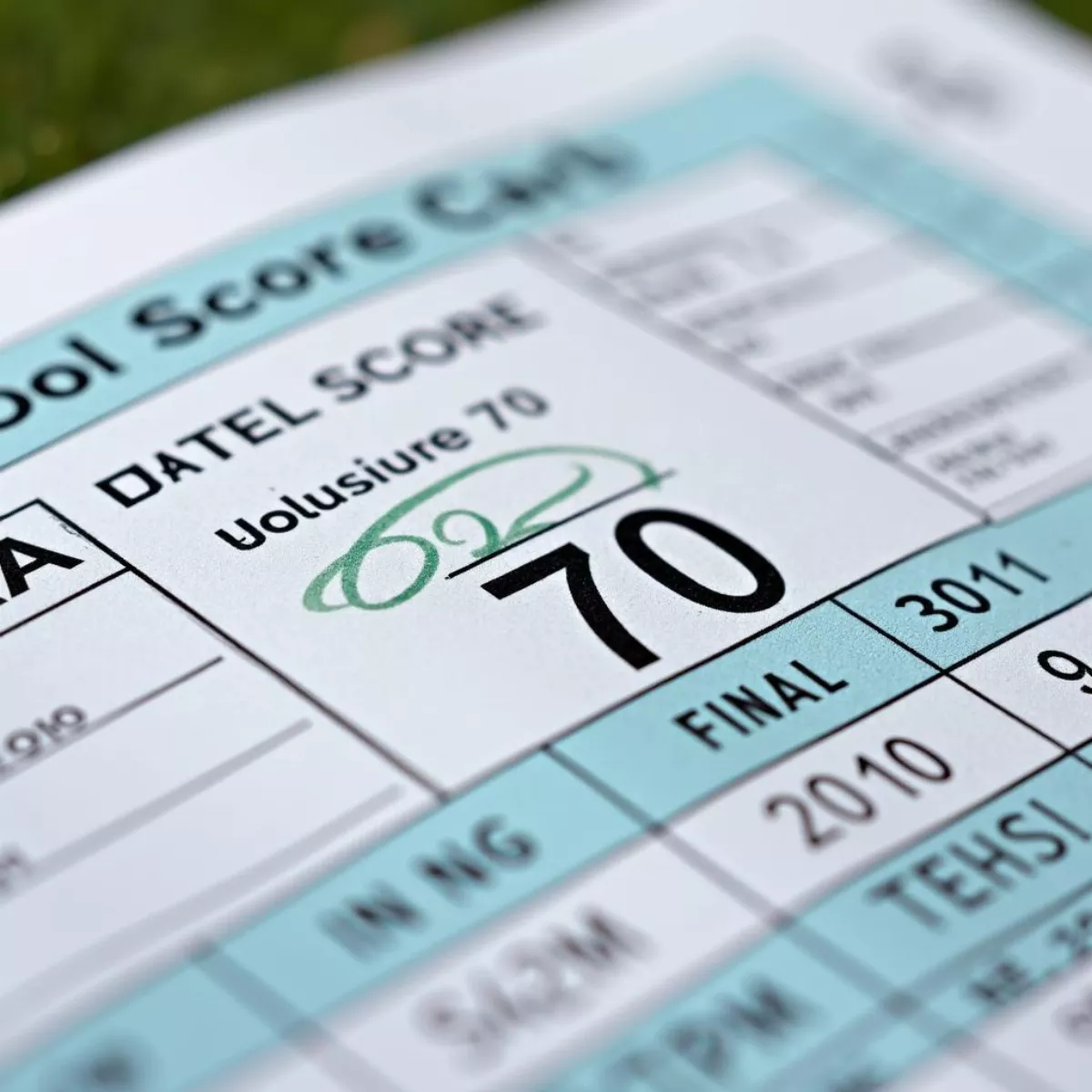Golf is a game of precision, patience, and practice. For many amateur players, the thought of breaking 70 is a dream that often feels out of reach. But just how common is it for golfers to shoot under par? In this article, we’ll explore the statistics behind golfers breaking 70, define what it really means, and offer insight into the percentages that you’ll find within different golfer categories.
Understanding the Meaning of Breaking 70
Breaking 70 means producing a score below 70 on an 18-hole round of golf. In most courses, shooting under par is a significant benchmark that highlights a golfer’s skill level. While professionals regularly achieve this feat, how do amateurs fare?
The Percentage of Golfers Who Break 70
Statistical analyses indicate that only a small fraction of golfers can consistently break 70. Studies suggest that approximately 1% of golfers can score below 70. This number illustrates how challenging it is to reach this scoring threshold.
 Golf Scorecard Under 70
Golf Scorecard Under 70
Here’s a breakdown of the statistics:
| Golf Skill Level | Percentage Breaking 70 |
|---|---|
| Professionals | 40-50% |
| Scratch Golfers | 10-15% |
| Low Handicap Amateurs (0-5) | 5-8% |
| Average Golfers (15-HI) | <1% |
Factors Affecting the Percentage of Golfers Who Break 70
While it might be easy to say “just practice more!” when asked how to break 70, the truth is that various factors contribute to a golfer’s ability to reach this milestone.
1. Skill Level
- Professional Golfers: Many pros break 70 routinely, especially during tournaments.
- Scratch Players: These are players with a handicap of 0, generally capable of breaking 70 in favorable conditions.
2. Consistency in Performance
- Amateur Performance: Many amateur players may have the ability to break 70 but lack the consistency. Playing consistently well often takes years of practice and mental fortitude.
3. Course Difficulty
- Course Rating and Slope: A more difficult course with a high rating and slope will naturally be harder to break par on. Understanding the metrics of your home course can help set realistic expectations.
4. Weather Conditions
- Wind and Rain: Inclement weather can affect performance dramatically. A calm day will facilitate lower scores compared to windy or rainy conditions.
 Professional Golfer Taking A Shot
Professional Golfer Taking A Shot
The Mental Aspect of Breaking 70
The pathway to breaking 70 often isn’t just about physical skills; the mental game plays a crucial role. Here are some key aspects:
- Confidence: Believing in your ability to score low can greatly influence results.
- Focus: Being able to block out distractions while on the course is vital for maintaining a good score.
- Pressure Management: Knowing how to manage your emotions during a round can make the difference between a good day and a great one.
Preparing to Break 70: Tips for Your Game
Are you aspiring to break 70? Consider these strategies to elevate your game:
- Practice Your Short Game
- Focus on chipping and putting. A significant percentage of strokes are lost in these areas!
- Enhance Course Management
- Knowing when to play safe and when to attack pins helps in lowering scores.
- Regular Physical Fitness Routine
- Strength and conditioning can significantly improve your swing and endurance.
- Seek Professional Coaching
- Professional lessons can provide invaluable feedback and targeted exercises.
 Golfer Practicing Short Game Chipping
Golfer Practicing Short Game Chipping
Key Takeaways
- Approximately 1% of golfers can consistently break 70.
- Professional and scratch golfers frequently achieve this while most amateurs struggle.
- Factors such as skill level, consistency, weather, and course difficulty heavily influence scores.
- Mental aspects, such as confidence and focus, play crucial roles.
- Regular practice, improved course management, and professional lessons can help aspiring golfers improve their chances of breaking 70.
FAQ: Frequently Asked Questions
1. What does it mean to break 70 in golf?
Breaking 70 refers to scoring under 70 strokes for an 18-hole round.
2. How many golfers can break 70?
Only about 1% of golfers can break 70; this includes professionals and highly skilled amateurs.
3. What is a scratch golfer?
A scratch golfer has a handicap of 0, meaning they can typically play at par or better.
4. How important is the short game to breaking 70?
Extremely important. Improvement in putting and chipping can save several strokes.
5. Does the type of course affect my ability to break 70?
Yes, more difficult courses make it harder to break par due to higher ratings and slopes.
6. Can I break 70 as an average golfer?
While challenging, with practice and proper course management, it’s possible for an average golfer to break 70 occasionally.
7. How often do professionals break 70?
Many professional golfers consistently shoot below 70, especially during tournaments.
8. Is it important to have mental strength in golf?
Absolutely! Mental strength helps in managing pressure and maintaining focus during play.
9. Can I work with a professional coach to improve my game?
Yes! Working with a coach can help identify weaknesses and improve skill areas vital for breaking 70.
10. What warm-up routines can help me prepare to break 70?
Incorporate stretching, hitting practice balls, and practicing short putts to prepare your body and mind.
Golf is a journey. Whether you’re shooting for 80, 70, or lower, remember that the game is as much about enjoying the process as it is about reaching milestones. Get on the course, keep practicing, and soon enough, you might find yourself breaking that elusive score of 70!